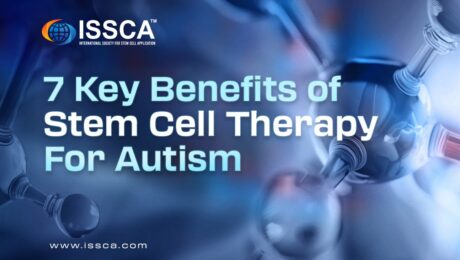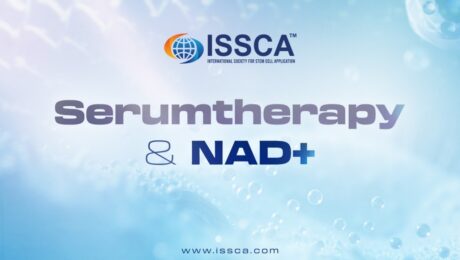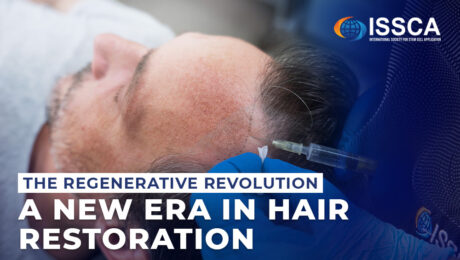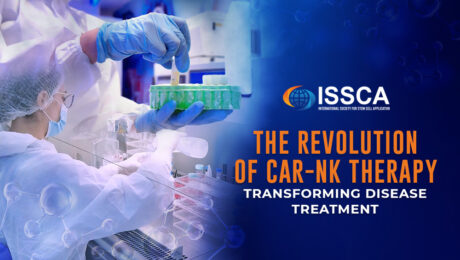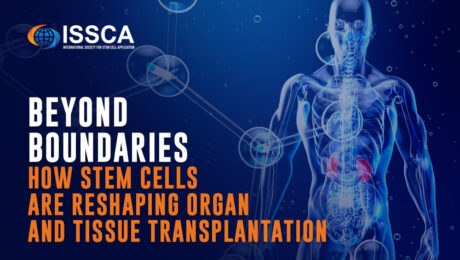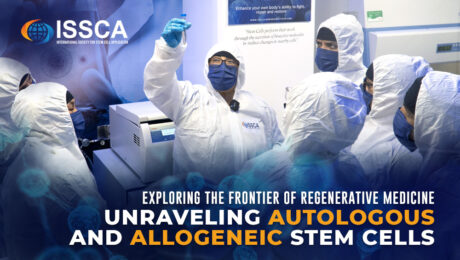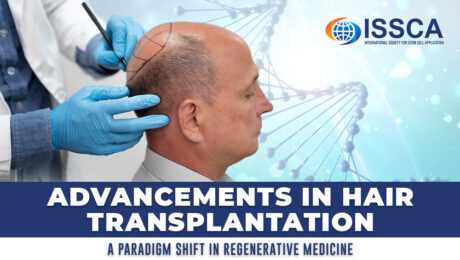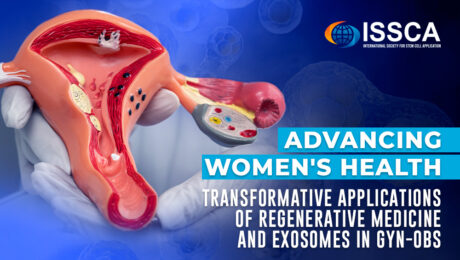Mesenchymal Stem Cells: An Advanced Discussion on Their Biology, Mechanisms, and Clinical Translation
The relevance of mesenchymal stem cells (MSCs) in regenerative medicine and immunomodulation is undeniable. Their study has evolved from merely characterizing their in vitro multipotentiality to a more granular understanding of their complex mechanisms of action and intricate interaction with the tissue microenvironment.
Molecular and Cellular Mechanisms of Action
The therapeutic action of MSCs is not limited to their differentiation capacity, which, while important for structural defect repair, is often overshadowed by their paracrine and immunomodulatory effects.
Direct Paracrine Immunomodulation: MSCs secrete an arsenal of bioactive molecules that directly modulate immune responses. These include:
Cytokines and Chemokines: They produce anti-inflammatory cytokines such as Interleukin-10 (IL-10) and Transforming Growth Factor beta (TGF-β), which suppress T and B lymphocyte proliferation, inhibit dendritic cell maturation, and promote macrophage differentiation towards an anti-inflammatory M2 phenotype. Simultaneously, they can secrete factors like Indoleamine 2,3-dioxygenase (IDO), which catabolizes tryptophan, suppressing T cell proliferation. Prostaglandin E2 (PGE2) is another crucial mediator, inhibiting T and NK cell proliferation and modulating macrophage function.
Surface Molecules: They express PD-1 ligand (PD-L1) and Fas ligand (FasL), which can induce apoptosis in activated T cells and promote tolerance.
Adhesion Molecules: They interact with immune cells through cell-to-cell contact, influencing their activation and migration.
Mitochondrial Transfer and Extracellular Vesicles (EVs): Emerging mechanisms revealing sophisticated intercellular communication:
Mitochondrial Transfer: MSCs can transfer functional mitochondria to damaged cells (e.g., pulmonary epithelial cells or ischemic cardiomyocytes), improving their energy metabolism, survival, and mitigating oxidative stress damage.
Extracellular Vesicles (Exosomes and Microvesicles): MSCs release EVs loaded with proteins, lipids, mRNA, and microRNAs. These bioactive packages can be internalized by recipient cells, transferring their content and modulating gene expression and intracellular signaling pathways, exerting anti-inflammatory, immunomodulatory, and regenerative effects. This has paved the way for the development of cell-free therapies based on MSC exosomes.
Homing and Sensing of the Inflammatory Microenvironment: MSCs exhibit a “homing” capacity (selective migration) towards sites of injury or chronic inflammation. This process is guided by chemokine gradients (e.g., CXCL12, MCP-1) and the expression of adhesion molecules on inflamed endothelium. Once at the site, MSCs are “primed” by the inflammatory microenvironment (e.g., by IFN-γ, TNF-α, IL-1$\beta$), which enhances their immunomodulatory capacity.
Challenges in Clinical Translation
Despite their enormous potential, the translation of MSCs from basic research to routine clinical practice faces several significant challenges:
Heterogeneity and Standardization: MSCs from different sources (bone marrow vs. adipose tissue vs. umbilical cord) and different donors show variability in their phenotype, proliferative capacity, differentiation potential, and secretome profile. The lack of standardized protocols for their isolation, expansion, and quality control hinders reproducibility and comparability between studies.
Potency and Viability: The viability and functionality of MSCs can be compromised by the cryopreservation process, transport, and administration method, affecting the effective dose in vivo. The “potency” of an MSC product (its ability to induce a desired biological effect) is difficult to quantify and standardize.
Long-Term Safety: Although generally considered safe, long-term studies on the risk of tumorigenesis or undesirable immunosuppressive effects are crucial, especially in immunocompromised patients.
Biodistribution and Persistence: The biodistribution of MSCs after systemic administration and their persistence at the injury site are limited, often requiring high doses or repeated administrations. Cell engineering strategies to improve their homing and survival are an active area of research.
Regulation: The regulatory classification of MSC products varies between countries, creating barriers to development and commercialization. Harmonization of guidelines and clarity in the definition of these biological products are essential.
Future Perspectives and Improvement Strategies
The future of MSC-based therapies is moving in several promising directions:
Cell-Free Therapies: The use of MSC-derived extracellular vesicles (exosomes) as a therapeutic agent. This offers advantages such as lower immunogenicity, greater stability and ease of storage, and the ability to cross biological barriers (e.g., blood-brain barrier).
MSC Engineering: Genetic modification or priming of MSCs to enhance their therapeutic properties (e.g., overexpression of anti-inflammatory or homing factors) before administration.
Combination Therapies: Use of MSCs in combination with biomaterials or scaffolds to improve cell retention at the injury site and promote more structured tissue regeneration.
Precision Medicine: Identification of biomarkers to select MSC subpopulations with higher potency for specific indications, and stratification of patients who will respond best to MSC therapy.
Understanding the “Secretome”: Comprehensive investigation of the MSC secretome to identify the key molecules responsible for their therapeutic effects, which could lead to the development of bioactive drugs without the need for cell administration.
In conclusion, MSCs represent a vibrant and dynamic field in regenerative medicine. Overcoming current challenges through rigorous translational research will be fundamental to fully capitalize on their immense potential and bring these innovative therapies to a broader scale to benefit patients with various diseases.
Cell Therapy: Autologous vs. Allogeneic
Autologous therapy uses cells derived directly from the patient. This approach involves harvesting, processing, and reinfusing the individual’s own cells, which eliminates the risk of rejection by the host immune system.
Allogeneic therapy, on the other hand, utilizes cells from a genetically distinct donor. In this context, compatibility is a critical factor, as a disparity can precipitate an adverse immune response.
The selection between an autologous and allogeneic approach is based on the underlying pathology, cell availability and viability, and the individualized risk/benefit profile for the patient.
What is Stromal Vascular Fraction (SVF)?
Stromal Vascular Fraction (SVF) is a heterogeneous solution of cells obtained from adipose tissue, commonly known as fat. This component is a rich and complex source of diverse cell populations.
The extraction process involves collecting fatty tissue, usually via liposuction, followed by enzymatic processing to release and concentrate these cells. Due to its rich cellular composition and autologous origin, Stromal Vascular Fraction is the subject of intense research in regenerative medicine for tissue repair and the treatment of degenerative diseases.
Stem Cells and Their Action in Chronic Inflammatory Processes
Stem cells play a crucial role in modulating chronic inflammatory processes.
Their action is primarily based on their immunomodulatory capacity. Stem cells secrete a variety of soluble factors (cytokines, chemokines, and growth factors) that influence the behavior of immune cells. This includes suppressing the proliferation of T and B lymphocytes, modulating macrophage activity towards an anti-inflammatory (M2) phenotype, and inducing regulatory T cells (Tregs), which are key to maintaining immunological tolerance and resolving inflammation.
Additionally, MSCs can exert paracrine effects that promote tissue repair. In a chronic inflammatory environment, where tissue damage is common, MSCs release factors that promote angiogenesis (formation of new blood vessels), cell survival, and the differentiation of local progenitor cells, thus contributing to regeneration and the reestablishment of homeostasis in the affected tissue.
- Published in Blog
What are some of the main benefits of stem cell therapy for autism? Does this treatment really work? Find out in this article.
If your child or a loved one is struggling with autism, you are not alone – according to the Centres For Disease Control and Prevention, about 1 in 36 in the US are on the spectrum of autism, and it can impact anyone – occurring in all racial, ethnic, and socioeconomic groups.
For many years, autism has baffled scientists and doctors due to its complex nature and varied presentation, including unclear causes, and a wide spectrum of symptoms that affects people differently.
As a result, there have been many potential treatments on the market that promise improvement – from behavioral therapies and educational interventions to dietary changes, supplements, and alternative practices like music therapy, sensory integration, or equine-assisted therapy.
However, in most cases, these treatments only target surface-level symptoms of this condition, without addressing the deeper biological factors that can be contributing to it. This is where stem cell therapy comes in.
If you are not familiar with this treatment, don’t worry – continue reading as we will discuss all the benefits of stem cell therapy for autism, how it works, and where you can get it:
What Is Stem Cell Therapy For Autism?
So, what exactly is stem cell therapy for autism, and how does it work to address symptoms beyond surface level?
Stem cell therapy is a groundbreaking approach in regenerative medicine that leverages the unique regenerative and immune-modulating properties of stem cells to improve neurological function, and reduce inflammation in the brain.
By introducing Mesenchymal Stem Cells (MSCs) from sources like umbilical cord tissue or bone marrow through injections in the body, this treatment targets the areas that are believed to be the biggest contributors for this condition – chronic brain inflammation, immune system dysregulation, oxidative stress, and impaired neural connectivity.
This translates to many benefits of stem cell therapy for autism – from supporting neural repair to improving signaling between brain cells and overall brain connectivity. But let’s take a deeper look:
What Are The Benefits of Stem Cell Therapy For Autism?
1. Stem Cells Have Anti-Inflammatory & Immunomodulatory Effects
While autism is not entirely understood, there is evidence that inflammation within the brain and spinal cord plays a role when it comes to the development of this neurodevelopmental condition.
According to a study conducted by the University of Maryland School of Medicine, severe inflammation in early childhood can alter the development of vulnerable brain cells, potentially leading to neurodevelopmental disorders such as autism.
More specifically, studies have shown that many individuals with this condition exhibit elevated levels of pro-inflammatory cytokines, such as interleukin-6 (IL-6), tumor necrosis factor-alpha (TNF-α), and others, as well as more oxidative stress.
So, where do stem cells come in this equation?
Among the main benefits of stem cell therapy for autism is that this treatment has anti-inflammatory and immunomodulatory effects. By secreting anti-inflammatory cytokines like IL-10 and TGF-β, stem cells help suppress inflammation and restore immune balance.
In addition, Mesenchymal Stem Cells help protect neurons from damage, improving the brain’s ability to rewire and adapt. As a result, you can expect to see a more stabilized brain function, better behavioral regulation, as well as enhanced cognitive development.
Put simply, one of the biggest benefits of stem cell therapy for autism is that it removes a key roadblock in the internal environment of the brain, which can give your loved one a better foundation for growth and function.
2. Stem Cell Therapy Can Help Improve Communication and Speech
Speaking of the benefits of stem cell therapy for autism, we can’t forget to mention improved communication and speech, which is a common symptom among people with ASD – in fact, according to the National Institute of Health, 3 out of 4 children show some impaired language abilities by the time they enter kindergarten.
In addition, nearly 1 in 12 (7.7%) U.S. children ages 3-17 has had a disorder related to voice, speech, language, or swallowing, which shows just how widespread communication challenges are when it comes to autism.
Stem cell therapy helps improve communication and speech by addressing the underlying biological factors that may be interfering with brain regions responsible for language development and processing.
Rather than simply focusing on outward symptoms, this therapy works on a deeper level to support the brain’s natural ability to heal and function more effectively.
3. You Will Notice Improved Social Interaction
Social interaction is another aspect of autism that many parents and children have to struggle with – in ASD individuals, challenges in this area often stem from differences in how the brain processes social cues, such as facial expressions, body language, tone of voice, and even the rhythm of conversation.
As a result, children with autism may struggle to initiate or maintain eye contact, engage in back-and-forth conversations, understand personal space, or interpret the emotions and intentions of others.
Among the benefits of stem cell therapy for autism is improved social interaction – you will notice that aspects such as eye contact, engagement, emotional connection, and responsiveness are improving throughout the course of the treatment.
4. Stem Cell Treatment Contribute to Enhanced Focus & Attention
Another important aspect when it comes to the benefits of stem cell therapy for autism is focus and attention, which can be a challenge in individuals on the spectrum.
What we commonly see is that they:
- Tend to be more distracted by external stimuli
- Have short periods of sustained attention during schoolwork or play
- Exhibit impulsive behaviors, such as interrupting
- Have difficulties following multi-step instructions effectively
- Can be anxious and alert
Stem cell therapies help improve focus and attention by regulating brain chemistry through immune modulation and inflammatory signals. They also reduce oxidative stress, effectively neutralizing free radicals and repairing oxidative damage in the brain.
The result is improved cellular energy and cognitive function, which positively impacts the ability of the brain to process information and filter distractions.
5. Repetitive Behaviors Become Less Frequent
One of the most notable symptoms in autism is the presence of obsessive or repetitive behaviors – such as hand-flapping, rocking back and forth, or spinning objects.
They are thoughts to arise from neurological imbalances that affect how the brain processes sensory input, emotional regulation and executive functioning. Unfortunately, these behaviors can significantly interfere with daily functions.
With this being said, among the key benefits of stem cell therapy for autism is reducing the frequency of these repetitive behaviors. Stem cell treatments impact positively on the:
- Disrupted connectivity between the prefrontal cortex and other brain regions
- Imbalance in neurotransmitters like dopamine and glutamate
- Heightened sensory processing
- Chronic brain inflammation
This treatment helps stabilize the neural circuits in the brain, and also aids with calming overactive brain regions associated with these patterns.
6. Stem Cell Therapy Supports Gut-Brain Axis Health
Among the main benefits of stem cell therapy for autism is that it supports gut-brain axis health. A lot of individuals on the spectrum experience gastrointestinal issues, including chronic constipation, diarrhea, bloating, abdominal pain, and food sensitivities.
Stem cell treatments can reduce inflammation in the gut lining, helping to heal intestinal issues and restore normal digestive function. In addition, they may reduce allergic reactions and food sensitivities by calming an overactive immune response.
Last but not least, among the benefits of stem cell therapy for autism is that it can help create an environment in which beneficial gut bacteria can flourish. This improves the microbiome balance, supporting better digestion, mood, and behavior.
7. Stem Cells Have Long-Term Neuroprotective Effects
Did you know that stem cells also have long-term neuroprotective effects? That’s one of the benefits of stem cell therapy for autism that isn’t talked about enough.
Because stem cells support cellular repair and regeneration, there is potential for long-term benefits beyond symptom management – helping to create a healthier, more balanced environment within the brain for continued development.
Stem cell therapy for autism offers a promising and innovative approach that goes beyond managing surface-level symptoms. By targeting the underlying biological factors such as chronic brain inflammation, immune dysregulation, oxidative stress, and impaired connectivity, this therapy may help improve core challenges of autism — including communication, social interaction, focus, and repetitive behaviors.
Additionally, its potential to support gut-brain health and offer long-term neuroprotective effects makes it a compelling option for families exploring complementary treatments.
While more large-scale clinical studies are needed to fully confirm its efficacy and long-term safety, early research and patient outcomes suggest that stem cell therapy could provide meaningful improvements in quality of life for individuals on the autism spectrum. As always, it’s essential to consult with experienced medical professionals to determine whether this therapy is appropriate for your loved one’s unique needs.
- Published in Blog
What is NAD?
NAD (Nicotinamide adenine dinucleotide) and its precursors, commonly known as NAD boosters, are some of the most important molecules on the planet—without them, life would cease to exist. At very high doses, they have been shown to improve the function of various types of cells and tissues throughout the aging body, including the heart, brain, muscles, and stem cells. Clinical studies show that one of the precursors, nicotinamide riboside, can increase NAD levels in white blood cells.
NAD can support cellular processes that contribute to healthy aging. A decline in its levels is not something the body tolerates well. In fact, several signs of aging are directly associated with the lack of NAD+ in the body, such as:
- Loss of proteostasis
- Mitochondrial dysfunction
- Glucose intolerance
- Insulin sensitivity
- Cellular senescence
- Altered epigenetics
This is partly because NAD+ plays a role in maintaining the stability of the human genome, being capable of repairing its own DNA. As we age, DNA damage occurs when cells divide, which mainly contributes to aging signs and the formation of cancers.
Additionally, NAD+ is required for energy production in much of the body, including the brain, immune cells, and muscle tissue. As NAD+ levels decline with age, these parts of the body begin to lose the efficiency they once had.
NAD+ also activates sirtuins, a class of enzymes that influence aging and longevity by acting within the body. They regulate various metabolic processes, including insulin secretion, lipid mobilization, stress response, and lifespan modulation. They also affect circadian rhythms and mitochondrial biogenesis. These enzymes are activated when NAD+ levels increase.
Chronic inflammation and increased immune activation are key factors responsible for the decline in NAD+ levels in the body. As people age, they are more likely to experience these issues, which may partly explain the apparent decline in NAD+ presence in humans.
Energy Metabolism
NAD+ can be synthesized from various dietary sources, such as salmon, lean meats, legumes, and nuts, but these only provide a small portion of what the human body truly needs. The main source comes from a recycling mechanism known as the salvage pathway.
NAD+ participates in reduction and oxidation processes, often referred to as redox reactions. These convert the oxidized form of NAD (NAD+) into its reduced form NADH—a crucial process for glucose and fatty acid metabolism and ATP formation.
As NAD levels gradually decline with age, this can manifest through the following issues, along with increased risk of neurodegenerative diseases and infections:
- Decreased autophagy
- Increased DNA damage
- Increased mitochondrial dysfunction
- Metabolic imbalance
However, there are things people can do to increase the amount of available cellular NAD+, and these actions are entirely independent of age:
- NAD+ increases during fasting and exercise.
- Increased NAD+ levels in animal studies have been associated with longer lifespan in those animals.
There are several practices that can have a practical effect on NAD+ levels in the body when used in combination:
- Fasting, caloric restriction, and exercise: Activities that cause energy stress in the body are very effective at boosting NAD+ levels.
- Consuming foods high in tryptophan or nicotinic acid are other ways to increase NAD+ levels, although this alone may not produce the profound effect some patients are seeking.
However, because the demand for this molecule is so high within the body, the organism relies on another way to produce it through a recycling system known as the Salvage Pathway. This pathway recycles nicotinamide, which is released when enzymes use NAD+. That nicotinamide is converted into nicotinamide mononucleotide, and then into NAD+. However, this process is subject to feedback inhibition by NAD+ levels in the body, meaning that if NAD+ levels are too high, this recycling process will shut down.
NAD boosters in supplement form can be tolerated at high doses and may effectively raise NAD+ levels. There is also evidence suggesting they help improve conditions associated with aging.
- Published in Blog
The Regenerative Revolution: A New Era in Hair Restoration
The Pursuit of Luscious Locks: Evolution of Hair Restoration
Traditional Hair Transplants: The Old Guard
For decades, methods like Follicular Unit Transplantation (FUT) and Follicular Unit Extraction (FUE) have dominated hair restoration, moving hair follicles from donor areas to balding spots. However, these methods often leave scars and have limited donor hair availability.
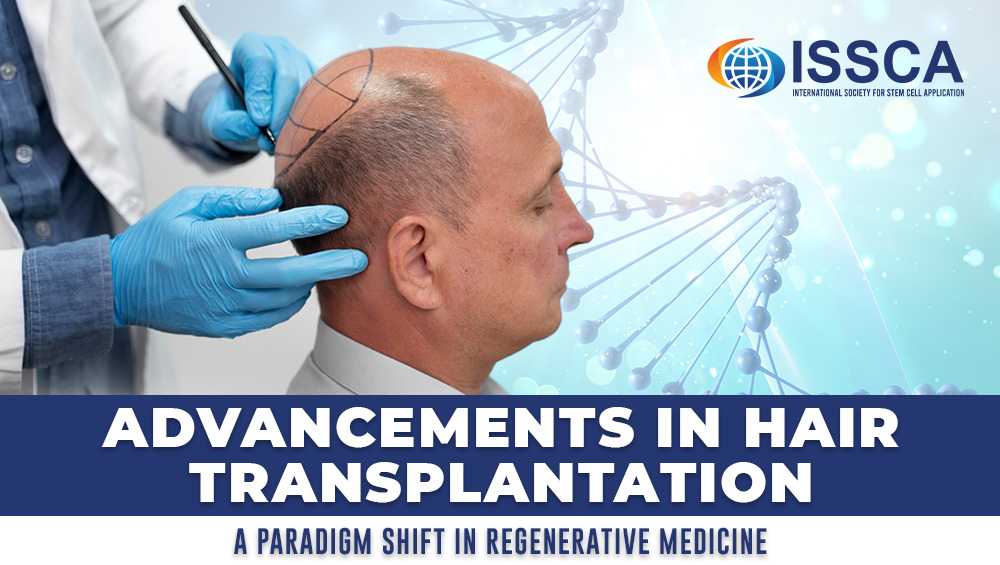
Regenerative Medicine: Revolutionizing Hair Restoration
Regenerative medicine is reshaping hair restoration with innovative approaches:
Stem Cell Therapy: Stem cells can differentiate into hair follicles, potentially stimulating hair regeneration and natural growth when introduced into the scalp.
Platelet-Rich Plasma (PRP): Using the patient’s blood enriched with growth factors, PRP therapy revitalizes hair follicles, promoting improved hair growth and quality.
Exosomes: These cellular vesicles aid in hair growth by reducing inflammation and supporting tissue regeneration, creating an optimal environment for follicle health.
Why This Transformation Matters
The shift to regenerative medicine in hair restoration goes beyond aesthetics:
Scar Minimization: Regenerative techniques minimize scarring, leading to more aesthetically pleasing results.
Enhanced Outcomes: Patients often experience more natural, robust hair growth compared to traditional methods.
Personalized Care: Regenerative medicine allows for tailored treatments that address each patient’s specific needs and hair restoration goals.
The Future of Hair Restoration
Hair transplants are undergoing a revolution with regenerative medicine:
The integration of regenerative techniques promises more natural, minimally invasive, and personalized solutions for hair loss.
Embrace the Future of Hair Restoration
Explore the frontier of regenerative medicine in hair restoration with ISSCA. Discover cutting-edge courses and insights shaping the future of healthcare on our website.
- Published in Blog
The Revolution of CAR-NK Therapy: Transforming Disease Treatment
In the ever-evolving landscape of medical innovation, one breakthrough stands out—a transformative approach known as CAR-NK therapy. This groundbreaking development has the potential to revolutionize disease treatment, offering a safer and more effective solution for patients. Join us as we delve into the five pivotal aspects of CAR-NK therapy, reshaping the future of medical care.
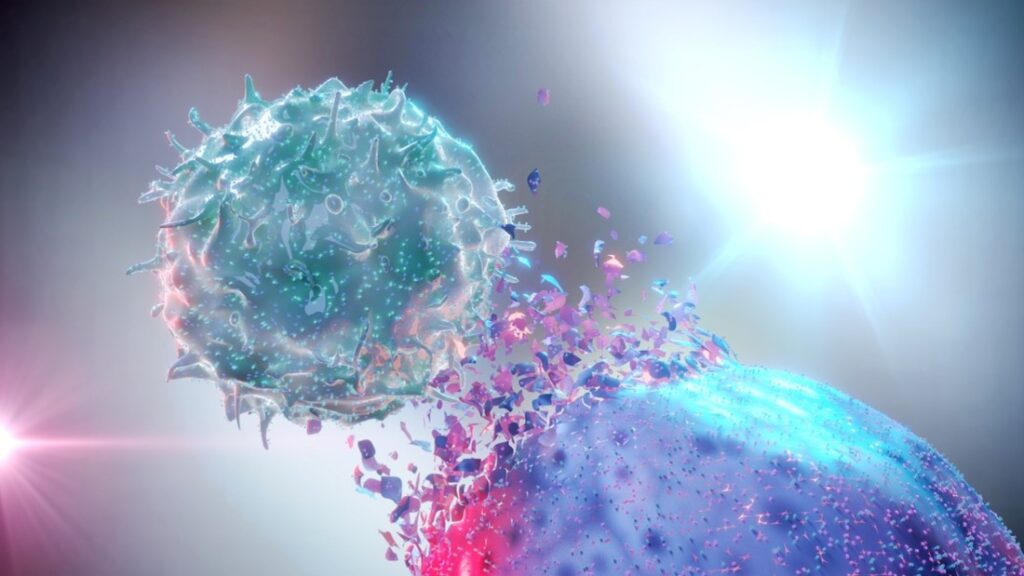
CAR-NK Therapy: Why is it a Game-Changer in Disease Treatment
1. Enhanced Safety and Versatility:
At its core, CAR-NK therapy represents a monumental shift in the treatment of various medical conditions. What sets it apart is its enhanced safety and versatility. Unlike its predecessor, CAR-T therapy, which uses the patient’s own T cells, CAR-NK cells can be derived from healthy donors or stem cells. This distinction significantly reduces the risk of complications, including graft-versus-host disease and cytokine release syndrome, which can sometimes accompany CAR-T therapy. Moreover, CAR-NK cells can be stored and used off-the-shelf, making them more readily available for patients in need.
2. Effective Against a Wide Range of Diseases:
The versatility of CAR-NK therapy extends to its effectiveness against a diverse spectrum of diseases. These remarkable cells possess the ability to target multiple antigens present on various cell types. From hematologic conditions to solid tumors, CAR-NK therapy demonstrates remarkable efficacy. Furthermore, it has the potential to counteract the mechanisms employed by cells to evade the immune system, such as immunosuppression and antigen loss.
3. Cost-Efficiency and Speedy Production:
Another compelling aspect of CAR-NK therapy is its cost-efficiency and rapid production. In comparison to the complex and personalized approach required for CAR-T therapy, CAR-NK cells can be manufactured on a larger scale. This streamlined production process significantly lowers costs, making this innovative therapy more accessible to a wider range of patients. The affordability of CAR-NK therapy brings us one step closer to a future where cutting-edge treatments are within reach for all.
4. A Thriving Field with Promising Potential:
While CAR-NK therapy is still in its early stages of clinical development, the initial results are promising and encouraging. Researchers and medical professionals worldwide are working tirelessly to unlock its full potential. Early trials have demonstrated its safety and efficacy, raising hopes for further breakthroughs in disease treatment.
CAR-NK therapy represents a monumental leap forward in disease treatment. At ISSCA.com, we are dedicated to advancing knowledge in the realm of regenerative medicine. We invite you to explore the transformative possibilities of CAR-NK therapy and its potential to reshape the future of medical care. As we journey together, you’ll discover that the horizon of possibilities in healthcare is continually expanding.
Explore our courses and international congresses at ISSCA.com to deepen your knowledge in regenerative medicine.
- Published in Blog
Beyond Boundaries: How Stem Cells Are Reshaping Organ and Tissue Transplantation
Stem Cells: Pioneers of Regeneration
Within the sacred corridors of medical advancement, a profound transformation is silently taking place, poised to reshape the very foundations of organ and tissue transplantation. Envision a realm where donor shortages and the specter of immune system rejection fade into history, and where medical horizons stretch to unprecedented frontiers. In this immersive voyage, we embark on a journey to unmask the enigmatic power of stem cells in the realm of transplantation, a journey that invites you to witness the precipice of medical progress.
The Choreography of Compatibility
Navigating the intricate choreography of compatibility between donor and recipient is one of the most formidable tasks in transplantation. The ever-watchful immune system often triggers rejection, undermining even the most meticulous transplantation endeavors. Yet, stem cells are orchestrating a symphony of change. Through ingenious techniques, researchers are tapping into stem cells’ immunomodulatory prowess, crafting an environment of harmonious coexistence between donor and recipient. This revolutionary approach not only mitigates the risks of rejection but also broadens the spectrum of viable donors.
A Symphony of Science
The harmony between stem cells and transplantation is not an untested hypothesis; it’s a symphony composed through rigorous scientific exploration. An extensive repertoire of peer-reviewed studies, gracing the pages of prestigious journals such as The Lancet and Nature Communications, underscores the potential of stem cells to elevate transplant success rates. These studies illuminate advancements spanning from refining graft survival to hastening the regeneration of vital tissues, a resounding affirmation of the transformative capabilities underpinning stem cell-driven transplantation.
Embark on a Journey of Revelation
Eager to unravel the mysteries encapsulating stem cell-powered transplantation? We extend a heartfelt invitation to embark on an illuminating expedition through our comprehensive training courses in regenerative medicine. Enrich your understanding under the tutelage of eminent experts, delving into the most recent breakthroughs, evidence-based methodologies, and clinical applications. Step into a realm where the boundaries of medical possibilities are redrawn, where your perception of transplantation is enriched, and where you assume the mantle of a pioneer in the regenerative revolution.
The fusion of stem cells and organ transplantation isn’t confined to the realm of scientific speculation; it represents a monumental stride towards re-scripting the destinies of countless lives. As we venture into an epoch where medical accomplishments redefine our limits, the expedition becomes all the more exhilarating.
Join us at issca.us, where the convergence of science and hope awaits. Immerse yourself in the vanguard of regenerative medicine, where the transformative prowess of stem cells beckons. Together, we shall forge ahead, empowered by the symphony of possibilities, shaping a brighter, healthier future for generations to come.
- Published in Blog
Exploring the Frontier of Regenerative Medicine: Unraveling Autologous and Allogeneic Stem Cells
WEDNESDAY, 06 SEPTEMBER 2023 / PUBLISHED IN BLOG
Exploring the Frontier of Regenerative Medicine: Unraveling Autologous and Allogeneic Stem Cells
In the realm of modern medicine, a groundbreaking field has emerged, promising to reshape the way we approach healing and rejuvenation – regenerative medicine. At the heart of this revolution lie stem cells, the unsung heroes of tissue repair and regeneration. In this comprehensive exploration, we delve into the intricate differences between two crucial types of stem cells: autologous and allogeneic. Prepare to be captivated by the scientific intricacies that underpin these extraordinary cells and discover how they’re poised to redefine medical possibilities.
Autologous Stem Cells: A Personalized Touch
Imagine harnessing the power of your body’s own natural healing abilities. Autologous stem cells make this vision a reality. Derived from your own tissues – be it bone marrow, adipose tissue, or other sources – these cells hold the promise of personalized healing. The process involves harvesting the stem cells, processing them to enhance their therapeutic potential, and then reintroducing them into the body. This “self-healing” approach minimizes the risk of rejection and side effects, making autologous stem cell therapies an attractive option for many.
Scientific Precision
Autologous stem cell therapies are supported by a wealth of scientific evidence. Studies published in esteemed journals like the Journal of Translational Medicine and Stem Cell Research & Therapy have highlighted their potential in diverse applications, from musculoskeletal disorders to cardiovascular conditions. This approach holds immense promise for targeted healing while minimizing the risk of immune system complications.
Allogeneic Stem Cells: A Shared Resource for Healing
In the quest for regenerative solutions, allogeneic stem cells emerge as a game-changer. These cells are sourced from carefully screened donors and subsequently administered to patients. By tapping into a shared pool of stem cells, medical practitioners can provide a standardized treatment option that’s readily available. Allogeneic stem cells hold the potential to address a broad spectrum of conditions, offering a versatile and accessible avenue for regenerative therapies.
Scientific Validation
The science behind allogeneic stem cell therapies is compelling. Rigorous research published in renowned journals such as the Journal of Stem Cells and Development and Stem Cells Translational Medicine has underscored their efficacy in various medical scenarios. This approach not only broadens the scope of treatment but also expedites the therapeutic process, presenting an exciting frontier in regenerative medicine.
Embrace the Future with Knowledge
Intrigued by the dynamic interplay of autologous and allogeneic stem cells in regenerative medicine? We invite you to embark on a transformative journey of discovery through our comprehensive training courses. Our platform offers unparalleled insights into the latest advancements, evidence-based practices, and clinical applications of these remarkable stem cells. Guided by esteemed experts in the field, our courses provide a unique opportunity to stay at the forefront of regenerative medicine’s evolution.
As the horizon of medicine expands to encompass regenerative possibilities, autologous and allogeneic stem cells take center stage. These cellular protagonists hold the key to unlocking personalized healing and broad-spectrum rejuvenation, ushering in an era of medical advancement like never before. Join us in our mission to unravel the mysteries of regenerative medicine and explore the profound potential of stem cells. Visit issca.us today, and together, let’s embark on a journey that could reshape the landscape of healthcare for generations to come.
- Published in Blog
Advancements in Hair Transplantation: A Paradigm Shift in Regenerative Medicine
WEDNESDAY, 09 AUGUST 2023 / PUBLISHED IN BLOG
In the realm of regenerative medicine, hair transplantation has experienced remarkable progress in recent years. As part of a multidisciplinary community of physicians and scientists dedicated to advancing the field, it is essential to stay informed about the latest developments in this area. This blog post aims to provide a comprehensive overview of the cutting-edge advancements in hair transplantation, highlighting the convergence of science, technology, and practice.
Tissue Engineering in Hair Transplantation
The integration of tissue engineering principles into hair transplantation has opened new avenues for regenerative medicine. Scientists are actively exploring the use of biomaterials, growth factors, and scaffolds to create an optimal environment for transplanted hair follicles. By nurturing follicular cells, tissue engineering techniques hold immense potential in enhancing transplantation outcomes and promoting tissue regeneration.
Stem Cell-Based Approaches
Stem cell therapy has emerged as a promising strategy within the realm of hair transplantation. Researchers are investigating the utilization of mesenchymal stem cells (MSCs) and adipose-derived stem cells (ADSCs) to stimulate hair follicle regeneration. These unique regenerative cells promote hair growth and significantly enhance the success rate of transplantation procedures. Ongoing research in stem cell-based therapies continues to unveil their potential to revolutionize hair restoration techniques.
Gene Therapy for Hair Loss
Gene therapy is gaining traction as a cutting-edge approach to addressing hair loss at its core. Scientists aim to develop innovative treatments for both genetic and acquired forms of hair loss by manipulating genes involved in hair growth and regulation. Techniques such as CRISPR-Cas9 gene editing hold immense potential for altering gene expression associated with hair follicle development, offering personalized regenerative therapies.
Nanotechnology in Hair Transplantation
Nanotechnology has paved the way for groundbreaking advancements in hair transplantation. Researchers are exploring the application of nanomaterials and nanoparticles to enhance the targeted delivery of growth factors, drugs, and stem cells directly to the hair follicles. This precise and controlled release optimizes the regenerative potential of transplanted hair follicles, leading to improved treatment outcomes and faster healing.
Artificial Intelligence (AI) and Machine Learning
The integration of AI and machine learning algorithms has transformed various medical fields, including hair transplantation. AI-powered technologies assist in precise hair follicle extraction, optimizing graft placement, and predicting post-transplant outcomes. By analyzing vast datasets and patterns, AI algorithms enhance decision-making, improve surgical techniques, and contribute to personalized treatment plans in hair transplantation.
As active contributors to the advancement of regenerative medicine, staying informed about the latest developments in hair transplantation is crucial. Tissue engineering, stem cell-based approaches, gene therapy, nanotechnology, and the integration of AI and machine learning are reshaping the landscape of hair restoration. By remaining at the forefront of these advancements, physicians and scientists can harness the power of regenerative medicine to effectively treat hair loss and alleviate human suffering.
Join us at issca.us and let us continue to collaborate, innovate, and explore the limitless potential of regenerative therapies.
- Published in Blog
Stem Cells and Diabetes: Exploring a Path to Improved Management
TUESDAY, 01 AUGUST 2023 / PUBLISHED IN BLOG
Diabetes is a chronic condition that affects millions of people worldwide. It occurs when the body cannot produce or use insulin properly, resulting in high blood sugar levels. Diabetes can cause serious complications such as heart disease, kidney failure, nerve damage, and vision loss.
Understanding Diabetes: Types and Challenges
There are two main types of diabetes: type 1 and type 2. Type 1 diabetes is an autoimmune disease that destroys the insulin-producing pancreatic beta cells. People with type 1 diabetes need to take insulin injections or use an insulin pump to manage their blood sugar levels. Type 2 diabetes is more common and occurs when the body becomes resistant to insulin or does not produce enough of it. People with type 2 diabetes can often control their blood sugar levels with diet, exercise, and oral medications.
However, these treatments are not always effective or sufficient for some people with diabetes. Moreover, they can have side effects such as weight gain, hypoglycemia, and gastrointestinal problems. Therefore, there is a need for alternative treatments that can restore the function of the pancreatic beta cells and provide a long-lasting cure for diabetes.
Stem Cell Therapy: A Promising Alternative
One of the most promising alternative treatments for diabetes is stem cell therapy. Stem cell therapy is a method of using various types of stem cells to replace or enhance the function of damaged or diseased cells in the body. Stem cells are undifferentiated cells that can develop into different types of specialized cells, such as muscle cells, nerve cells, or blood cells.
Stem cell therapy for diabetes aims to generate new insulin-producing beta cells from stem cells and transplant them into the pancreas or other sites in the body where they can secrete insulin in response to blood sugar levels. Different sources of stem cells can be used for this purpose, such as adult stem cells, or induced pluripotent stem cells.
Adult Stem Cells (ASCs)
Adult stem cells (ASCs) are found in various tissues and organs of the body and have the ability to differentiate into specific cell types related to their origin. For example, mesenchymal stem cells (MSCs) are ASCs that can be isolated from bone marrow, adipose tissue, or umbilical cord blood and can differentiate into bone, cartilage, fat, or muscle cells. MSCs have been shown to have immunomodulatory and anti-inflammatory properties that can protect the transplanted beta cells from immune attack or inflammation. MSCs can also secrete growth factors and cytokines that can stimulate the regeneration of endogenous beta cells or enhance the function of exogenous beta cells.
Induced Pluripotent Stem Cells (iPSCs)
Induced pluripotent stem cells (iPSCs) are generated by reprogramming somatic cells (such as skin cells or blood cells) into a pluripotent state similar to embryonic stem cells (ESCs) using specific genes or factors. iPSCs can overcome the ethical and immunological issues of ESCs, as they do not require the use of embryos and can be derived from the patient’s own cells. iPSCs can also be genetically modified to correct any defects or enhance any features of the beta cells.
Research and Clinical Trials
Several studies have demonstrated the feasibility and efficacy of stem cell therapy for diabetes in animal models and human trials. For example, a study by Rezania et al. (2014) reported that they were able to generate glucose-responsive insulin-secreting beta cells from human iPSCs using a seven-stage differentiation protocol. These beta cells were able to reverse diabetes in mice upon transplantation under the kidney capsule. Another study by Pagliuca et al. (2014) reported that they were able to produce large-scale batches of functional beta cells from human ESCs using a three-dimensional culture system and sequential modulation of key signaling pathways. These beta cells were also able to reverse diabetes in mice upon transplantation under the kidney capsule.
Conclusion and Future Directions
In conclusion, stem cell therapy for diabetes is a novel and promising alternative treatment that can potentially provide a permanent cure for this chronic condition by replacing or enhancing the function of insulin-producing beta cells. We still need to explore a lot of ground, in terms of these and other conditions. You can learn more about regenerative medicine and stem cells by enrolling in our international certification program at www.issca.us.
- Published in Blog
Advancing Women’s Health: The Transformative Applications of Regenerative Medicine and Exosomes in GYN-OBS
FRIDAY, 23 JUNE 2023 / PUBLISHED IN BLOG
In recent years, the field of gynecology and obstetrics (GYN-OBS) has witnessed remarkable advancements in regenerative medicine and the utilization of exosomes. These groundbreaking technologies offer innovative approaches to address various gynecological and obstetric conditions, revolutionizing the way we approach women’s health. Let’s explore the exciting applications of regenerative medicine and exosomes in GYN-OBS and their potential to transform patient care.
Regenerative Medicine: Unleashing the Power of Healing
Regenerative medicine harnesses the body’s own regenerative capabilities to promote healing, tissue repair, and regeneration. In GYN-OBS, it has shown promising applications in conditions such as endometriosis, uterine fibroids, pelvic floor disorders, and even infertility. Through the use of stem cell therapy and other regenerative techniques, women can experience non-invasive and effective treatments that target the root causes of their conditions.
Exosomes: The Cellular Messengers of Healing
Exosomes, tiny vesicles derived from stem cells, are gaining recognition for their pivotal role in intercellular communication. In GYN-OBS, exosomes are being investigated for their potential to modulate inflammation, promote tissue regeneration, and enhance healing. They hold promise in managing conditions like pelvic inflammatory disease, optimizing postpartum recovery, and even supporting reproductive health.
Enhancing Fertility and Reproductive Health
One area where regenerative medicine and exosomes are making significant strides is in fertility and reproductive health. Stem cell therapies offer the potential to improve ovarian function, restore hormonal balance, and enhance the success rates of assisted reproductive technologies. Additionally, exosomes may play a role in optimizing endometrial receptivity and supporting embryo implantation, leading to improved outcomes in fertility treatments.
Reimagining Postpartum Recovery and Pelvic Health
The postpartum period can bring challenges for women, including pelvic floor disorders, urinary incontinence, and perineal tears. Regenerative medicine and exosome therapies present promising solutions for promoting postpartum healing, strengthening pelvic floor muscles, and improving overall pelvic health. These non-surgical and minimally invasive approaches offer women new avenues for restoring their well-being and quality of life after childbirth.
The Future of Regenerative Medicine and Exosomes in GYN-OBS
The applications of regenerative medicine and exosomes in GYN-OBS herald a new era in women’s healthcare. With their potential to address a wide range of gynecological and obstetric conditions, these innovative technologies bring hope and transformative possibilities for women worldwide. As research and advancements continue to unfold, the future of GYN-OBS holds promise for personalized, non-invasive, and effective treatments that prioritize the holistic well-being of women.
Remember, always consult with healthcare professionals to understand the best options for your individual needs and explore the potential of regenerative medicine and exosomes in GYN-OBS. You can learn more about regenerative medicine by enrolling in our international certification program at www.issca.us.
- Published in Blog



